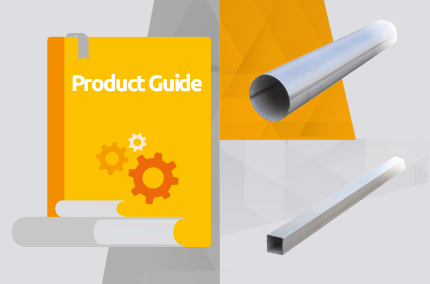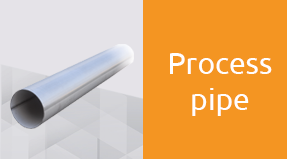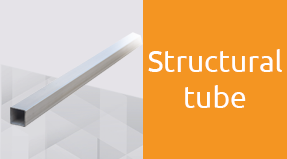PIPING SELECTION GUIDE
Simplify your product research by following our guide to help you select the most suitable pipe for your requirements :

1. Application environment :
You need to take into account the environment that your piping will be used in to choose the most suitable piping.
You should choose the material it is made from according to the environment that it will be used in. For example, 1.4307 stainless steel (equivalent to 304L stainless steel) can be used in environments with low humidity which are not very aggressive.
When the usage environment is aggressive (e.g. near to the sea, with an iodised atmosphere etc.) you should use 1.4404 stainless steel (equivalent to 316L stainless steel).
2. Usage conditions, performance & standards
a. Process pipes :

Step 1 : Fluid type
You must start by defining the type of fluid which you will transport in your piping. This step is necessary to check material compatibility as well as to confirm material chemical resistance.
Please click here to see our documentation about this subject : indicative material chemical resistance
Step 2 : Flow rate
After this you need to define the flow rate you need to make sure that your process will function correctly.
You can use this to estimate the nominal diameter (DN) of the pipe according to the required fluid flow rate.
Step 3 : Pressure and Temperature
You must check the piping's operating pressure and temperature rating.
Please click here to see our documentation about this subject : MAP for pipes
Step 4 : Pressure drop
You must carry out pressure drop calculations to make sure that the pressure will be high enough to correctly supply each one of the machines within the process.
Linear pressure drops are closely linked to a pipe's internal surface roughness.
You can find the specific pressure drop (e.g. linked to a piece of equipment, valve, safety valve, non-return check valve etc.) on the product data sheet for each product. >> Please click here to see our product data sheets
Step 5 : Surface finishes and Standards
- Industrial piping : Metric, ISO (according to EN 10217-7), ANSI/Schedule (according to ASTM A312), O.D. (according to ASTM A-269) standards :
Ra = approximately 1.6 µm (Ra not guaranteed)
- Food and beverage piping : DIN and SMS standards (according to EN 10357) :
Ra < 0.8 µm except for weld seams
- Pharmaceutical & Biotechnology piping : ASME BPE norms standards (according to ASME BPE)
SF1 surface finish: Ra < 0.51 µm
SF4 surface finish: Ra < 0.38 µm
We propose the following types of pipes :
1. Rolled and welded pipes , as indicated by their name, the material used to make these pipes is rolled and then welded to form a pipe, so a weld seam is present on their surface.
2. Extruded and seamless pipes , these have a higher pressure resistance.
b. Structural piping

Unlike process pipes , structural pipes are not water-tight, so you should not use them to transport fluids. They are defined according to the mechanical stresses that can be applied to them.
The different types of structural piping :
1. The squared and rectangular pipes which are mainly used to build industrial machine frames.
2. Round decorative pipes which are used to embellish ramps and safety guards.
>> Please contact us to find out more�
